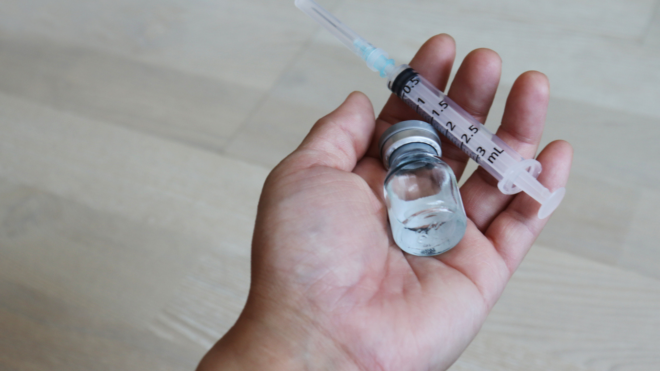We all know ovulation as that magical time each month when a mature egg swooshes (not a scientific term) down your fallopian tube and patiently awaits fertilization. If you're like most women, you ovulate between day 11–21 of your cycle, counting backwards from the first day of your last period. Because, you know, everyone keeps track of THAT.
Simplest way to know if you're ovulating? Your cervical fluid will take on the wet, slippery appearance of egg whites, you lucky girl.

Ovulation means you're most fertile, so yay if you're trying to get pregnant. But there is a teensy price you pay for your body to do its thang — like breast tenderness. And cramping. And while ibuprofen or retail therapy may offer temporary relief, adjusting your diet to help you, rather than work against you, is a wise idea.
"Ovulation is a time when estrogen is at its highest, so the best foods help your liver do the extra work needed to break this down and prevent you from having mid-cycle pain, breakouts, mood swings, even bloating," explains Alisa Vitti, a functional nutritionist, founder and CEO of FLOLiving.com, and best-selling author of WomanCode.
And if ovulating itself is the problem, Vitti adds, "there are foods to help with that, too."
Here's what to grab from the fridge or pantry when you're in your O-phase:
Kale: This leafy green contains a natural compound called indole-3 carbinol — we know, catchy, right? — that helps your liver break down estrogen, says Vitti. Bonus: You're also getting lutein, an antioxidant that protects your vision, and phytonutrients that have cancer-fighting properties.
How to eat: Add kale to pesto and guacamole, or steam or sauté to mellow the flavor, then serve as a side.
Cinnamon: Yes, your fave baking spice has some "who knew?" superpowers. It's antibacterial, for instance. Anti-inflammatory. And "it helps your body ovulate," Vitti says. (Some research indicates that cinnamon may even boost your odds of getting pregnant if you have polycystic ovary syndrome (PCOS).)
How to eat: Sprinkle cinnamon on your cereal, yogurt, or toast or add to savory dishes like stir-fries and chili. No side effects are associated with a teaspoon or less of cinnamon each day, but don't take a higher amount (or supplements) without first speaking to your doctor. Cinnamon may interfere with some medications.
More from The Stir: How Much Do You Know About PMS? (TRIVIA)
Radishes: Along with turnips and rutabaga, radishes are the outcasts of the veggie world. No one knows how to prepare them, and their peppery taste can take some getting used to. But give 'em a try for their folate, vitamin C, and fiber. Plus, says Vitti, radishes are a "liver cleanser."
How to eat: Slice thinly and add to a salad, or sauté with salt and pepper.
Buckwheat: This healthy grain contains a compound called D-chiro-inositol, which has the ability to drop insulin and testosterone levels while promoting ovulation, explains Vitti.
How to eat: Try kasha, a quick-cooking roasted buckwheat. Or swap your usual pasta for buckwheat noodles.
Eggs: However you, um, slice them, eggs are an "easy, absorbable protein required to make adequate levels of hormones for ovulation," explains Vitti.
How to eat: Makes no difference whether you like your eggs scrambled, poached, or in an omelet — although please don't have them raw because that's just kind of gross.
Image via iStock.com/pxhidalgo




